
When you think of the Plymouth Barracuda, usually the highly popular E-body comes to mind first. Words like “Plum Crazy Purple”, “Hemi” and “Shaker Hood” pop into your head. However, many seem to forget where the origins of the ‘Cuda came from. In fact, the original Barracudas weren’t E-bodies what so ever. Based on Chrysler’s A-body platform, the Plymouth Barracuda made its debut in fastback form on April 1st, 1964; six years before the famous 1970 fish ever came into the picture.
At first glance, the Barracuda looked like a Plymouth Valiant with a strange fishbowl-like back window. In reality, it pretty much was! The Barracuda used the Valiant’s wheelbase, hood, windshield, quarter panels, doors, bumpers, A-pillars and front glass to name some of the parts sharing. However, it was the Barracuda only trunk lid and back window especially that make this little fish shine all on its own. The back window was created in collaboration between PPG and Chrysler and was the largest back window ever installed on a standard production car at the time. When the car was designed, Plymouth’s executives had wanted to name it the “Panda”, however designer John Samsen’s suggestion of “Barracuda” prevailed; thank goodness. The all new Barracuda came with a few engine choices, those being the 170 cubic inch Slant 6, 225 cubic inch Slant 6 and the 273-cubic inch V8.

On the automotive market, the Barracuda was a direct competitor to the Ford Mustang; and sadly got blown out of the water by Mustang sales. That being said, the Barracuda still managed to make a name for itself, selling just over 23,000 units that year. In 1965, the Barracuda received some new options as well as the 273 Commando engine and “Formula S” package were released. These new items for the 1965 proved to work as Barracuda sales almost tripled that year, selling just over 64,000 units. For 1966, the Barracuda received a face lift, with new tail lights, front sheet metal, bumpers and instrument panel to name a few of the changes. While sales dropped to around 38,000 units that year, the Barracuda would continue on through 1969 with the A-body platform, before being re-designed on the new E-body platform in 1970. While the E-body ‘Cudas remain at the top of the Mopar food chain, the earlier A-body versions do have a strong following and just so happen to be one of the best bang for your buck entry level Mopars out there.
Marc Alexander from British Columbia, Canada is one of those A-body Barracuda fanatics. We originally met Marc over a year ago after his friend Mark Hemrich (we’ve featured two of Mark’s cars) told us about a killer little Barracuda that he had. We quickly became good friends with Marc and previously featured his 1971 Dodge Super Bee. At the time, Marc was doing some upgrades on the Barracuda so we weren’t able to take pictures of it. That’s until now.

While looking in the “Buy and Sell” newsprint one day back in 1997, Marc came across an ad that said “1966 383 Barracuda”. It peaked his interest. His friends had also seen the ad for the car however they assumed because it had a 383, it had to be butchered up. Thus, nobody bothered to go look at it in person. Curious to know more, Marc decided to take a drive out to Surrey where the car was located to take a better look. As it turns out, the owner was deaf. When you would phone his number, there would be silence for the first little bit. You’d have to wait for him to type in a reply that would play over the phone. Many people would just hear the silence at first and hang up. Being as he was hard to communicate with, he was having a problem selling it.
While looking at the car, Marc noticed a V8 emblem on the fender. When he opened the hood, he found a 273 Commando; not a 383 as had been advertised. The seller had the Barracuda as well as a 1966 AMC Marlin. He told Marc that one of them had to go. Marc decided he definitely wanted the Barracuda so he offered the seller $550 and took the car home March 14th, 1997.
Once Marc got the Barracuda home, he quickly tore into the restoration. After stripping the car down to the shell, it was sent to Maple Ridge Hi-Tech Collision to get the body and paint work done. “The owner of the shop asked me what colour I wanted it. I told him I love black but it had to be straight,” says Marc. The Barracuda had absolutely no dings or dents. Rust was very minimal with the only spots being found on the inner fenders and rear wheel wells; typical A-body spots. So, once those were fixed, it went black. Once the body and paint work was complete, the freshly painted shell was brought home to assemble. “Most of the parts needed for the restoration were acquired through horse-trading. By the time I was done the restoration, I was only into it for around $5,600 because I had traded parts I had for most of the stuff for the car. I bought an 8¾ A-body Suregrip rear end with 3:55 gears. That was my biggest score for that car”, shares Marc.
Besides the body and paint, everything was done in Marc’s garage and completely by himself. “My career had very high stress levels. For me, it was a sanity piece to build it. When you have a high stress job, it’s nice to be able to play with something and keep your mind off the job”, says Marc. His family even chipped in with the restoration. For his birthday one year, his wife got him most of the interior new from Legendary and then he got the seat cover kit for Christmas. Marc says, “I’d find diagrams online for every section of the car. I’d then blow them up, print them off and hang them on the wall to look at as I was building it.”

Marc finished the restoration on the Barracuda and got it on the road for Father’s Day 1999. He continued to drive and enjoy the car for the following years. In 2014, he decided to spruce up the 273 so out it came. The engine is a LA block bored .040-over and produces 9.52.1 compression. Marc built it himself and fitted it with Edelbrock closed chamber aluminum cylinder heads, Icon Forged Racing pistons, a .509 lift camshaft, Clevite Dana timing chain, ARP cylinder hex flex bolts, windage tray, roller rockers, hydraulic lifters and a PRW high flow water pump. Marc sourced MSD for their Pro-Billet distributor and hi-torque mini starter. Sitting on top is a 750cfm Holley carburetor and Edelbrock Performer dual plain aluminum intake. The exhaust breathes through TTI ceramic headers and a custom Y pipe 2 ½” exhaust system featuring Flowmaster 40 series mufflers for a nice rumble.
Backing the engine is a 904 Torqueflite automatic transmission fitted with a TCS high stall torque converter and a TransGo-2 shift kit. The suspension is relatively stock but Marc has upgraded it with a Hellwig 1 ¼” front sway bar that he recently scored off Craigslist. The front brakes were upgraded as well with a full SSBC disk brake conversion kit. For better smoke shows, he also installed a Hurst line lock. It rolls on 14” Rallye wheels wrapped in BF Goodrich Radial T/As. We thank Marc for letting us share his cool little fish with your all and wish him many years of cruising!


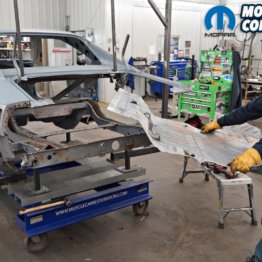

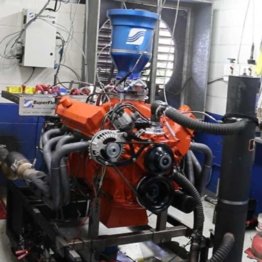
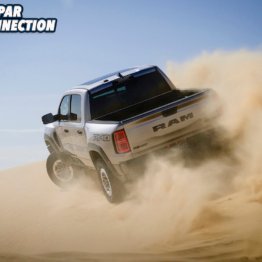
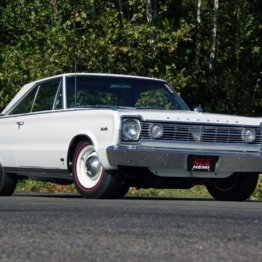












































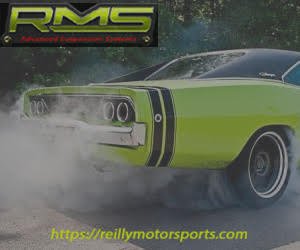


 Mopar Connection Magazine – The ONLY Daily Mopar Magazine © 2022. All Rights Reserved. Mopar Connection Magazine is the ONLY daily Mopar Magazine bringing you the latest Mopar news, technology, breaking news, and Mopar related events and articles. Find out the latest information about Mopar, Mopar products and services, stay up to date on Mopar enthusiast news, dealership information and the latest Mopar social media buzz! Sign up for the Mopar Connection Magazine newsletter for the latest information about new products, services and industry chatter. Mopar Connection Magazine is the best and only source you need to be a Mopar industry insider!
Mopar Connection Magazine – The ONLY Daily Mopar Magazine © 2022. All Rights Reserved. Mopar Connection Magazine is the ONLY daily Mopar Magazine bringing you the latest Mopar news, technology, breaking news, and Mopar related events and articles. Find out the latest information about Mopar, Mopar products and services, stay up to date on Mopar enthusiast news, dealership information and the latest Mopar social media buzz! Sign up for the Mopar Connection Magazine newsletter for the latest information about new products, services and industry chatter. Mopar Connection Magazine is the best and only source you need to be a Mopar industry insider! by
by